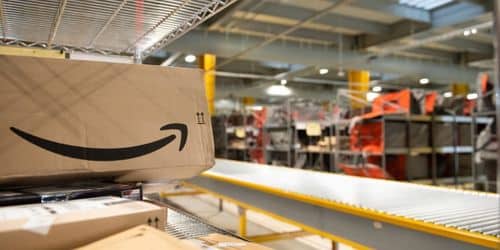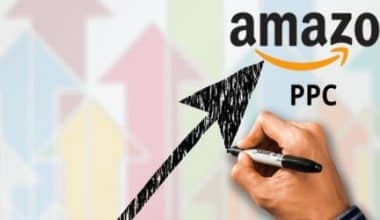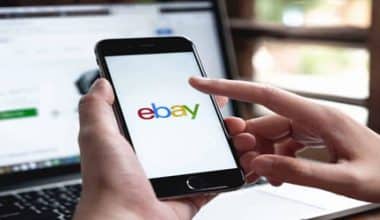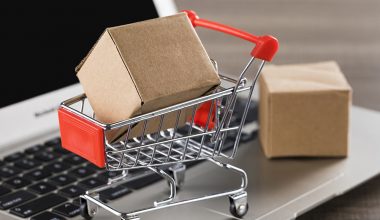Knowing how to resell on Amazon is an excellent method to generate money, and many people find success using the e-commerce market in this way. Yet, as with any money-making venture, it is necessary to conduct your homework, set everything up appropriately, and have a plan. You can make money by developing a strategy for your special business. There are various processes required when reselling on the retail giant, including identifying the suitable items to sell, finding the right manufacturer, and more.
While that is straightforward, our comprehensive tutorial on how to become an Amazon seller will help you obtain a deeper knowledge of the principles discussed above. We’ll also go through the best methods for reselling on Amazon.
How Amazon Resell Works
Here’s how reselling on Amazon works:
- You purchase a product from a retail store, internet merchant, or wholesaler at a much cheaper price than the market cost.
- You list the product with a markup on Amazon using the Amazon Seller app.
- Whenever a buyer buys your product, you ship it yourself or use Fulfillment by Amazon (FBA) to fulfill the sale. If you’re dropshipping, the supplier distributes the product directly to your consumer.
- With less of an Amazon referral fee, you keep the difference between your cost and the selling price.
Several Amazon Reselling Strategies
#1. Retail Arbitrage
Retail arbitrage is an e-commerce business concept where you buy discounted, clearance, or inexpensive things from retail stores and resell them at higher rates on Amazon.
If there is a big gap in a product’s retail and online pricing, retail arbitrage is a smart way to make money. For example, if you buy something at Walmart for $10 and resell it on Amazon for $25, you can make a $15 profit.
#2. Online Arbitrage
Online arbitrage is an e-commerce business concept where you purchase low-priced products from online retailers like AliExpress and resell them on Amazon.
Internet arbitrage is similar to retail arbitrage, except that the purchasing source is online rather than in a physical store. If you’re a new seller, online arbitrage can teach you how to sell online before opening your own e-commerce store.
#3. Amazon Dropshipping
Dropshipping on Amazon is an online business strategy in which you purchase things on demand from a wholesaler, who then distributes the products directly to your consumer.
There is no upfront investment in inventory or storage, and there is no minimum order requirement.
#4. Amazon Wholesale
Amazon wholesale is a business concept in which you purchase things in large quantities from wholesale vendors and resell them on Amazon.
If you have a reasonable budget but are unwilling to commit the time and money required to manufacture your own private-label products, buying wholesale is an excellent resell approach.
There are higher margins (about 50%) when selling wholesale on Amazon, but you’ll need to find dependable suppliers and manage your own inventory.
However, 3PLs or services like Amazon FBA can assist you with inventory offloading and shipping logistics.
Top Items To Resell On Amazon
There are so many amazing items to offer, but how do you determine what to resell on Amazon? We’ll go over some of the most lucrative product categories and categories that are best for reselling on Amazon:
#1. Personal Care and Beauty
Products in this category are constantly popular! Here, you can find several options for Amazon reselling. Purchasing through wholesalers can be quite inexpensive, allowing for significant profit margins. The most important thing here is to focus on trends, as Beauty is a very trend-driven sector. Product quality is particularly crucial because some cosmetics can have an impact on purchasers’ health and wellness.
#2. Shoes and Clothing
You can try reselling with less risk if you select this category. Begin with no-name accessories, which are cheap yet of great quality, and subsequently resell more popular brands. Note that you must seek authorization from the brand owner before selling any brand-name clothing or shoes. You can not sell these items without having the necessary approval.
#3. Sports
This is yet another great category to resell on Amazon! There will always be a vast range of items for you to sell, many of which may appear identical but are actually of different quality. The Sports category includes both winter and summer options, many of which are not seasonable or delicate and are always in demand. Start with something simple and small, like yoga blocks or water bottles, and continue to develop your range of products.
#4. Books
Books are an excellent product for arbitrage or flipping. Numerous people have developed profitable businesses by buying and reselling books on Amazon. Books can be quite profitable if you choose the proper ones. Completers and collectors should consider old books, and schoolbooks are always in demand. Non-fiction stories are among the most popular books, and they are particularly profitable due to their high resale value.
#5. Electronics
As the most popular category in eCommerce in general, Electronics products are among the highest-selling category on Amazon as well. Because so many merchants consider Electronics as a promising category option, these products may appear to be excessively competitive. If you are a newbie, here are some of the best things to resell:
- Smartphone accessories
- Computer Accessories
- Electronic charger devices
Read Also: AMAZON PPC: Detailed Guide To The PPC Strategy
How to Resell Items on Amazon
Now that you have all the background information regarding purchasing and selling on Amazon, it’s time to unpack how to set yourself up for reselling on the marketplace. It’s a step-by-step procedure, and we’ll walk you through each stage.
Step #1. Create an Amazon seller account
The very first thing to do is to register your Amazon seller account.
Amazon offers two sorts of seller accounts—an individual and a professional one.
A professional account costs $39.99 a month, but the individual one merely asks for a $0.99 fee for every sale. Simply do the figures, and you’ll see that if you plan on selling more than 40 items a month, a professional account actually comes in cheaper.
Moreover, an individual account limits you to 50 sales a month, which, for a reseller, is a modest quantity.
Thus, we recommend that you start with a professional account to make use of all the extra benefits it provides, such as order reports, Purchase Box eligibility, numerous inventory tools, and so on.
Step #2. Locate the proper product
Now, the appropriate product choice will often decide the success of your reselling activities. As a result, you should be prepared to devote some time to product research.
Your choice should take into account three major factors: product quality, degree of competition, and margins.
1. Choose high-quality items
While you may believe that pricing dictates everything in resale, you would be mistaken; quality is still necessary if you want to develop a viable reselling business on Amazon.
Hence, whatever thing you select has to have quality. It affects your reviews, seller ratings, return volumes, and eventually the health of your account, not just ephemeral factors like customer contentment. And this, in turn, means ranks and the ability to win the Buy Box.
Recall that Amazon’s A9 algo considers not only sales and keywords but also reviews—so maintaining excellent product quality is essential!
2. Identify high-margin products
It’s self-evident that having a product with high margins is preferable to selling an item with low margins. Nevertheless, for a reseller, this is extremely vital because chances are you will have to engage in a pricing war in which you must compete for the lowest price feasible.
If you have a super-low profit per sale, you can’t afford to get out of the loop and build your business by increasing your product base or marketing efforts. Possessing a high-quality product with the biggest margin will assure the scalability of your Amazon business.
3. Identify low-competition products
Another important thing to consider is the amount of competition. There are two approaches to this:
- Because there is a track record of success, you can offer products that face stiff competition.
- You can sell items with little to no competition.
Of course, you might immediately think that the second option works best. You don’t have to compete with many other sellers on pricing, Purchase Box, and other factors.
Yet on the negative, starting with low-competition products may simply mean that they don’t have the demand or the margins, yet if you opt for high-competition products, you will have to have a solid seller rank.
The choice is ultimately yours, but if you are new to the marketplace, start with the second strategy and choose higher-competition products as you establish seller authority.
If you locate a product that satisfies all of these requirements, don’t celebrate just yet. Consider a few more things before making your final product choice:
- Take a look at competitors—check their pricing history, especially to notice a bad downward trend.
- Examine the cost per unit—contact manufacturers and wholesalers to obtain the lowest sourcing price to be able to determine possible earnings per item.
- Purchase a few product samples to see the product quality for yourself.
- Try to avoid choosing huge, heavy, or delicate items since these could lead to delivery complications you don’t want to encounter.
- Check keyword metrics for a specific product to see if there is any seasonality in product demand (if searches for that product always surge in summer but drop to near-zero in winter, that’s a seasonal product).
It may appear intimidating to conduct extensive product research when you are just getting started with Amazon, but it is vitally necessary. You can, however, employ specialized programs such as Product Research for Amazon, which virtually automates the entire process, allowing you to uncover the next winning Amazon product with minimal work.
Step #3. Improve your product listing
If you choose a low-competition product that isn’t even featured on Amazon yet, you’ll have to create a brand-new product listing. And then optimize it!
Product listing is the digital storefront that exposes your product—so if it’s cluttered, unclear, or unpleasant, you will put your buyers off.
Now, product listing optimization is an art and science of its own—here are a few crucial points to consider:
- Upload high-quality photographs and videos of your product.
- Do keyword research to incorporate relevant terms that may help you rank higher on Amazon.
- Make an eye-catching (and keyword-optimized) product description, and keep your bullets informative.
- Provide an A+ description if you want a chance at a best-seller placement.
- Promote product reviews and encourage buyers to rank you as a seller (this post provides some helpful hints for this).
Step #4. Use FBA
You might not want to pay the FBA fees, but successful Amazon reselling is directly related to your seller ranking, and that means you will have to opt for Amazon’s fulfillment (FBA) service.
Amazon FBA takes care of storage, picking up, packing, and shipping, giving full customer support, and even handling refunds. And Amazon sure encourages sellers (and resellers) to use this service—it can help to increase your seller rating and, consequently, up your chances of winning the Buy Box.
Hence, unless you are reselling a unique item, to stay competitive when competing against those other resellers, you’ll have to use FBA.
This means you should include FBA charges in your profit calculation.
Step #5. Win the Amazon Buy Box
We’ve already discussed the Buy Box, so you’re probably wondering what it is.
The Buy Box is the white box on a listing that allows you to purchase an item. It is not available to all sellers, and it is dependent on the experience you can provide to a consumer (speed of delivery, shipping options, customer care, etc.).
While Amazon doesn’t divulge all the characteristics that assist you to get into the Buy Box, normally you match the following criteria:
- Provide competitive prices
- FBA will fulfill your offer.
- Have a high-quality product
- Possess favorable customer feedback
Read Also: AMAZON ADVERTISING: Detailed Guide To Amazon Advertising Strategy
Create a Successful Amazon Reselling Business That Continues to Expand
If you understand how to set up a resale business on Amazon, you should be set for success—as long as you selected the proper goods, created an outstanding product listing, and did all possible to win a Buy Box.
Yet establishing things on Amazon as a reseller could seem fairly easy, so you might be wondering—if everyone follows these principles, can they still fail?
Why Do Resell Businesses Fail?
Of all, there is no single certain technique to create a successful business concept. Yet, there are a few frequent failure issues to be aware of, most of which are related to bad pricing strategies and cost underestimation:
- Increasing competition: Amazon does not restrict the number of people who can resell an item. As a result, you may one day find yourself among hundreds of dealers of the same goods. And this is the type of atmosphere in which it is difficult to compete.
- Winning the Buy Box is becoming increasingly crucial, therefore resellers always begin by lowering their prices rather than playing the long game—improving their seller rank, raising the number of reviews, and so on.
- If you’re reselling a branded item, it could enter at any moment even if the original brand wasn’t on the marketplace when you started. And this implies you’re giving up the majority of your benefits, as original brands can nearly always set a lower price and get more client trust.
- Resellers don’t always dig into the cost structure of the goods they are selling—it might be a good idea when you start witnessing dropping margins as you can try to work with the manufacturer in cutting expenses.
Make sure to keep these fail elements in mind when you are growing your Amazon resale business, and optimize the efficiency of all the procedures we’ve outlined here to acquire a competitive edge over all the other resellers who didn’t know how to go sensibly about reselling on Amazon.
Is It Legal Resell Items on Amazon?
Yeah, it’s entirely legal to buy a product from a store and resell it on Amazon. You do not need a permit or to be an authorized reseller. When you buy something, it becomes yours, and you can resell it if you choose. But bear in mind that if you purchase something from a store, it is no longer new and must be listed as “Used/Very Excellent Condition.”
If you wish to market things as “New” you’ll need to obtain them from a wholesaler or manufacturer.
It’s also worth mentioning that while you can legally resell any product you buy, Amazon does set some restrictions on reselling particular brands. While there is no official list, some of such brands include:
- Adidas
- Disney
- Hasbro
- LEGO Samsung
When buying a product to resell on Amazon, make sure to do some research to confirm there aren’t any restrictions on it.
What’s the Difference Between Selling and Reselling on Amazon?
Amazon sellers are brands that offer their products to the public through the site. This is sometimes done by brands to supplement their physical store. Meanwhile, resellers are also customers who buy pre- or ready-made goods from suppliers—frequently and generally in bulk—and resell them to Amazon shoppers.
Resellers differ from distributors in that they contact closely with suppliers and manufacturers about market trends. This relationship allows distributors to influence production, branding, and marketing.
Final Thoughts
Reselling on Amazon needn’t be tough, and is surprisingly easy to set up, but it is always going to have that competitive advantage as it’s harder to expand, particularly if you chose to resell known brands rather than choosing the private label path.
Established brands don’t necessarily want hundreds of resellers all advertising their items, especially as many businesses would simply list those same things themselves, so the private label approach is a smart option.
Instead of getting caught up in a race to the bottom by attempting to resell products with high competition, consider bringing new products to Amazon as this can be a game changer and one of the most important factors in your success when reselling on Amazon.
- WHITE LABELING: Detailed Guide To How It Works
- HOW TO START AN AMAZON BUSINESS IN 2023: Step-By-Step Guide
- ONLINE RESELLER: Meaning & How to Become One (2023 Tips & Ideas)
- AMAZON SEO: How To Optimize Your Products To Rank Better
- HOW TO START AN AMAZON STORE: Detailed Beginner’s Guide






